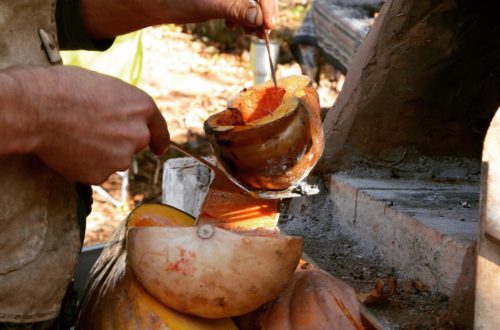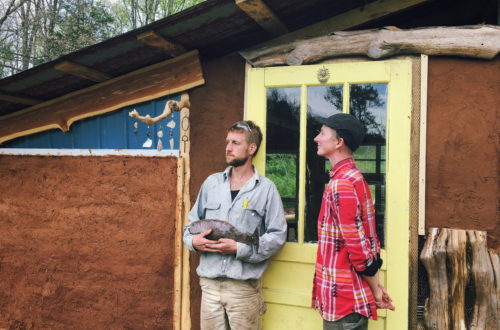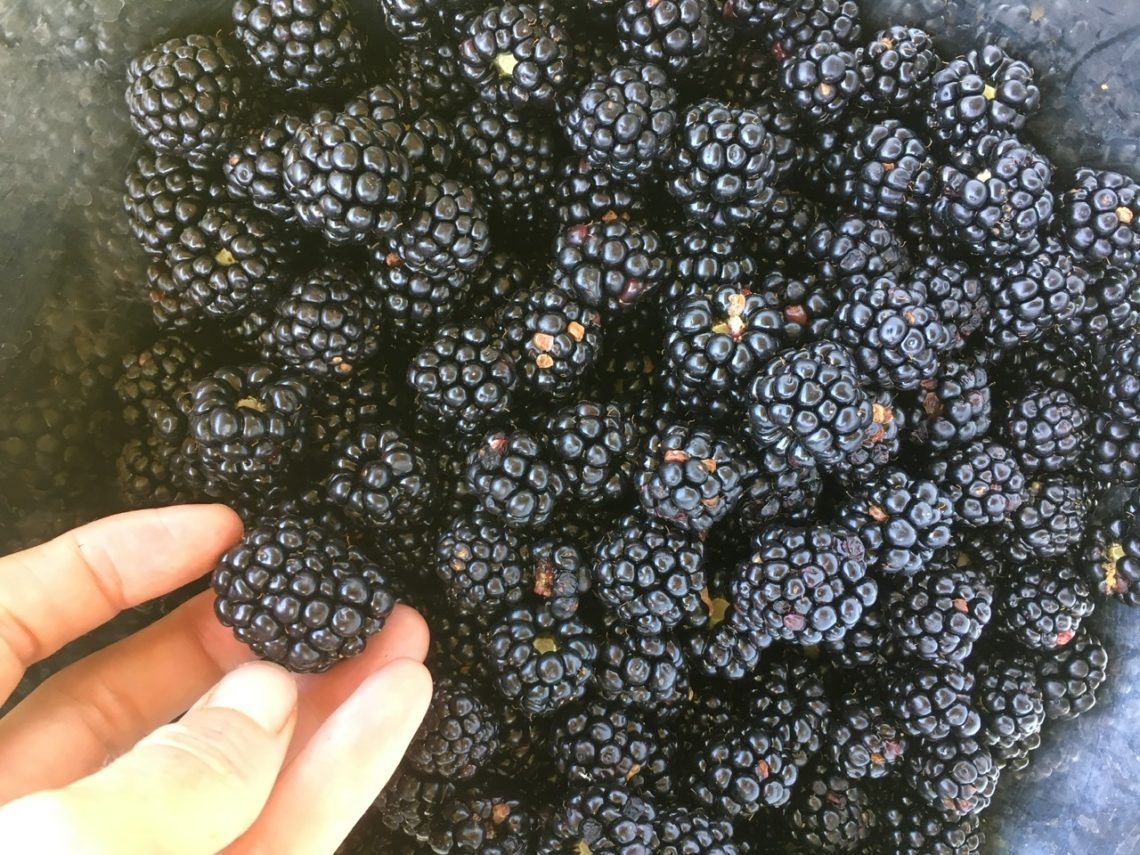
Blackberry Culture: It’s the Jam
“When the blackberries hang swollen in the woods, in the brambles nobody owns, I spend all day among the high branches, reaching my ripped arms, thinking of nothing, cramming the black honey of summer into my mouth; all day my body accepts what it is. In the dark creeks that run by there is this thick paw of my life darting among the black bells, the leaves; there is this happy tongue.”
Mary Oliver
As we move through our frozen “black honey of summer” we delight in the summer’s bounty and look forward to this year’s crop.
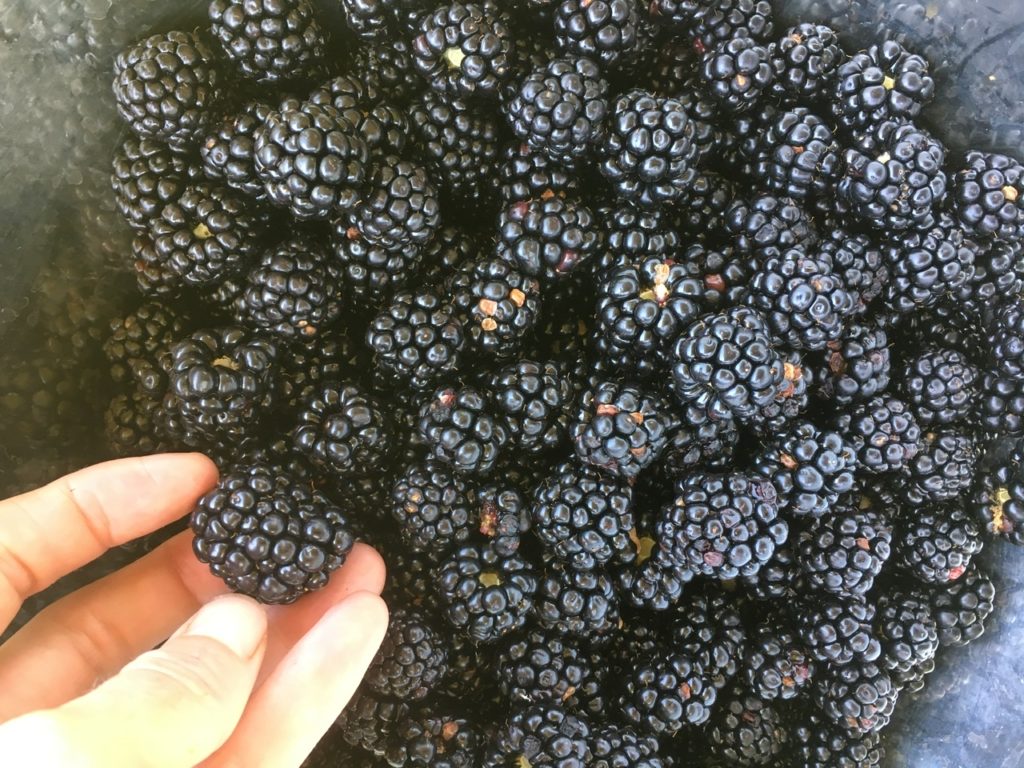
Thornless blackberries have been a great addition to our edible landscape, one of the many friends in the Rubus genus.
There are over a hundred types of blackberries worldwide, yet we focus on select genetics. Blackberries are fairly promiscuous, and are none too picky about where they grow. Hybrid such as loganberries, tayberries and boysenberries are blackberries crossed with raspberries.
Luckily for us fruit lovers there have been breeding efforts to select the best qualities of wild selections and increase productivity. Today we can easily grow a wide range of blackberries to ensure a local supply of antioxidant rich berry goodness. Without many inputs, you can have luscious crops of juicy nuggets of berry delight as soon as the second year after planting.
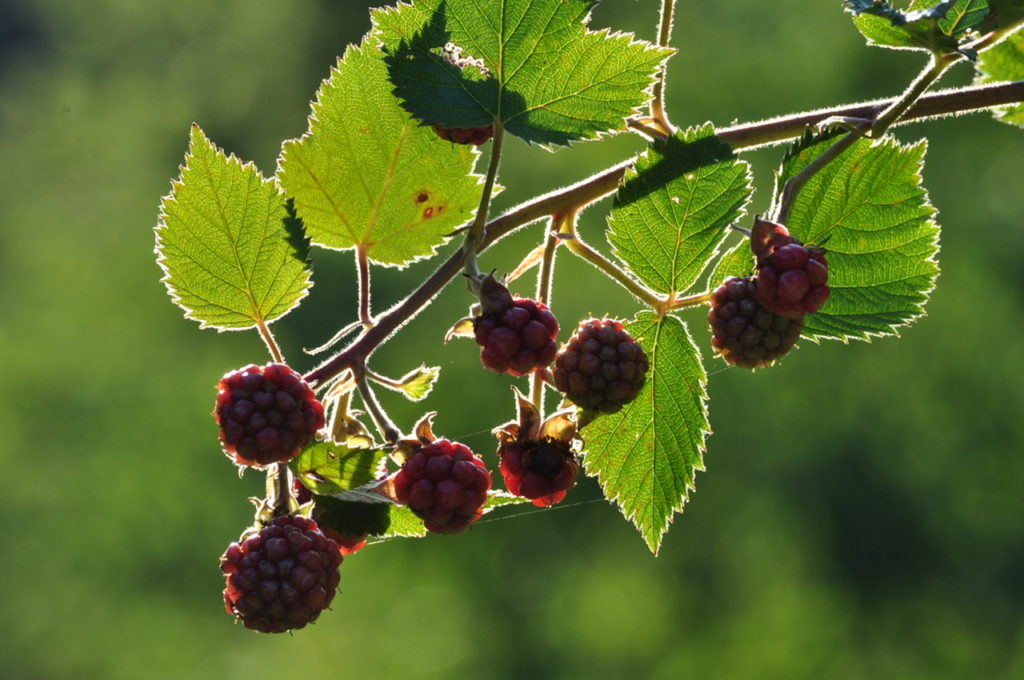
Rubus fruiticosa are loosely grouped into erect, semi-erect and trailing habits. This is based on their growth habits and informs management practices. Erect varieties are stout enough to stand on their own (especially if pruned to encourage lateral branching). Semi-erect will grow in a slightly sprawling manner, and are most easily managed with trellising, but can be managed (or not managed) without out. They can grown more than 12 feet in a season. Trailing varieties get into everyone’s business and keeping them manageable takes a little effort.
At Mountain Jewel we have focused on semi-erect varieties such as Triple Crown, Chester and Boysenberries (a hybrid of black berries and raspberry). There is an even more recent breeding effort that has created primocane-bearing blackberries. Most commonly first year growth (primocane) is purely vegetative and will flower and fruit the following year (then known as floricanes). These new varieties bear on first year growth, although being patented we do not offer them for sale.
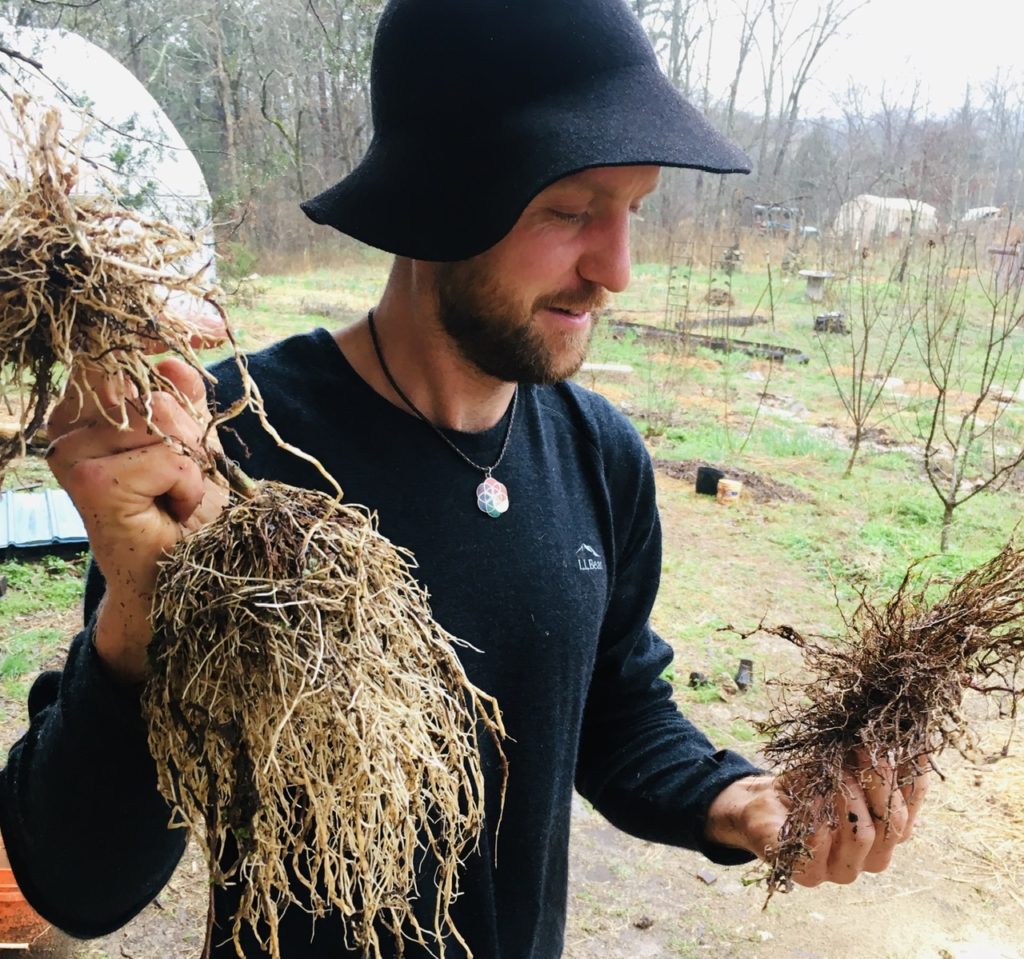
While it’s true that the most vibrant tasting berries are those growing wild, with a little effort and a whole lot less thorns, anyone can harvest their own nutrient dense food from whatever space is available to you. Good tilth, high organic matter, around neutral pH and constant moisture will produce the best yields.
In our experience, we don’t always get around to giving the plants much attention and they still manage to put on decent growth and fruit. We didn’t irrigate once last summer (it was a dry one) and the berry patch continued to establish itself and bear fruit.
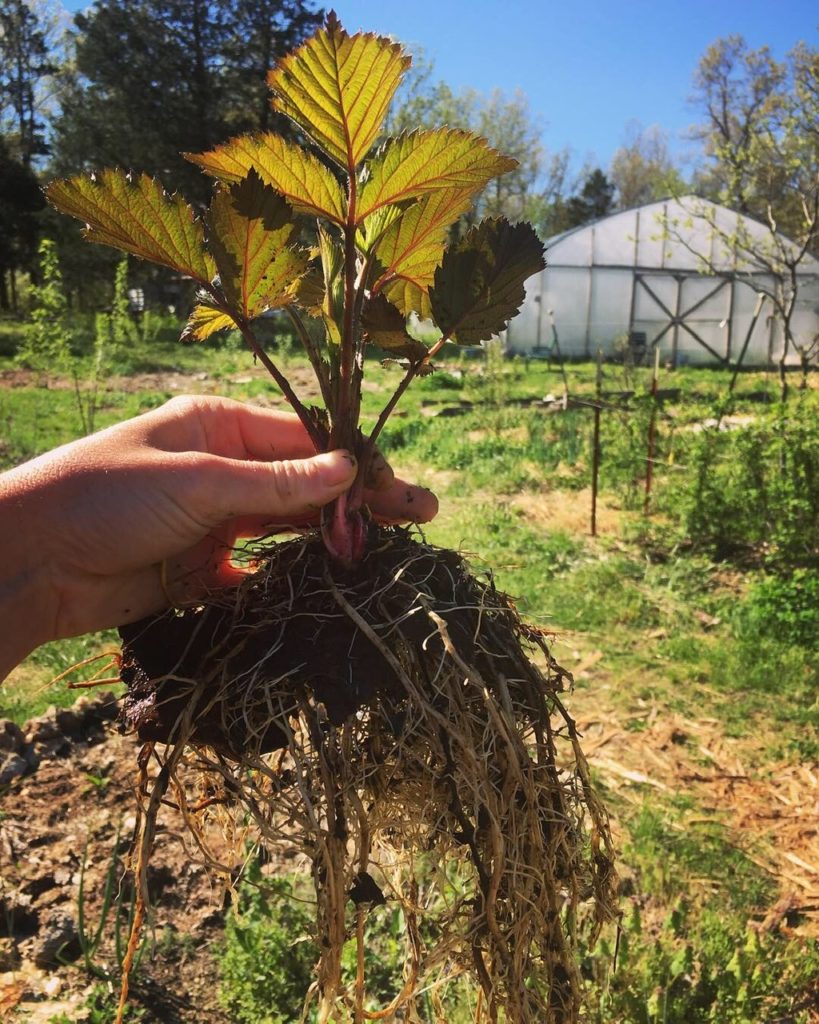
We plant ours 5-6 feet apart in rows 6 ft apart and use 8 ft T posts with 14 gauge fencing wire as a trellis. The first year they received a 4-6” layer of rotted sawdust and planer shavings and a light dressing of turkey manure. We planted them on contour and have hand shaped mini terraces for the berries and we sowed clover and wildflowers in the pathways.
Now is the perfect time to establish a berry patch and we are offering a trilogy of bare root blackberry plants (3 for $20, Chester or Triple Crown Variety) for those wanted to get their blackberry game on.
“O, blackberry tart, with berries as big as your thumb, purple and black, and thick with juice, and a crust to endear them that will go to cream in your mouth, and both passing down with such a taste that will make you close your eyes and wish you might live forever in the wideness of that rich moment.”
Richard Llewellyn
These are tip layers (canes left to sprawl will send roots out and are cut from mother plant). They propagate themselves naturally and readily. Even if you don’t have an ideal spot, it’s well worth getting them established, as they will continue to bear fruit (and new plants) for years. One could even grow them in pots if outdoor space is limited.
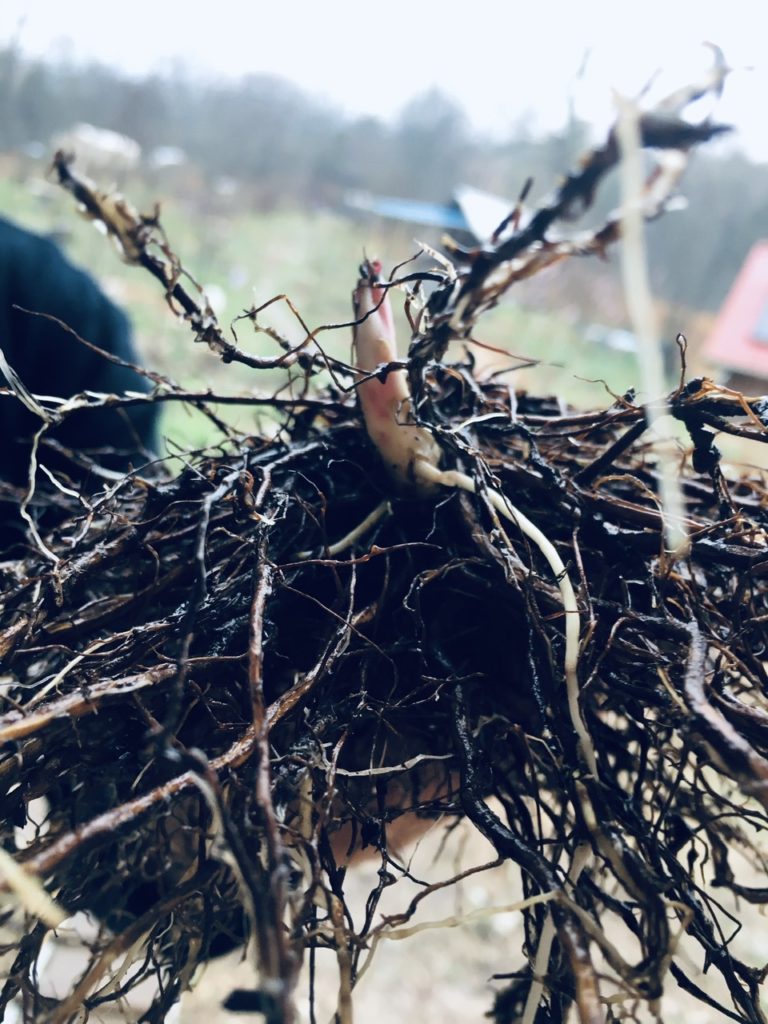
In this trilogy you will receive well-established plants with plenty of fibrous roots that should be planted as soon as possible. They can be potted up to grow even more roots or planted directly (our preference).
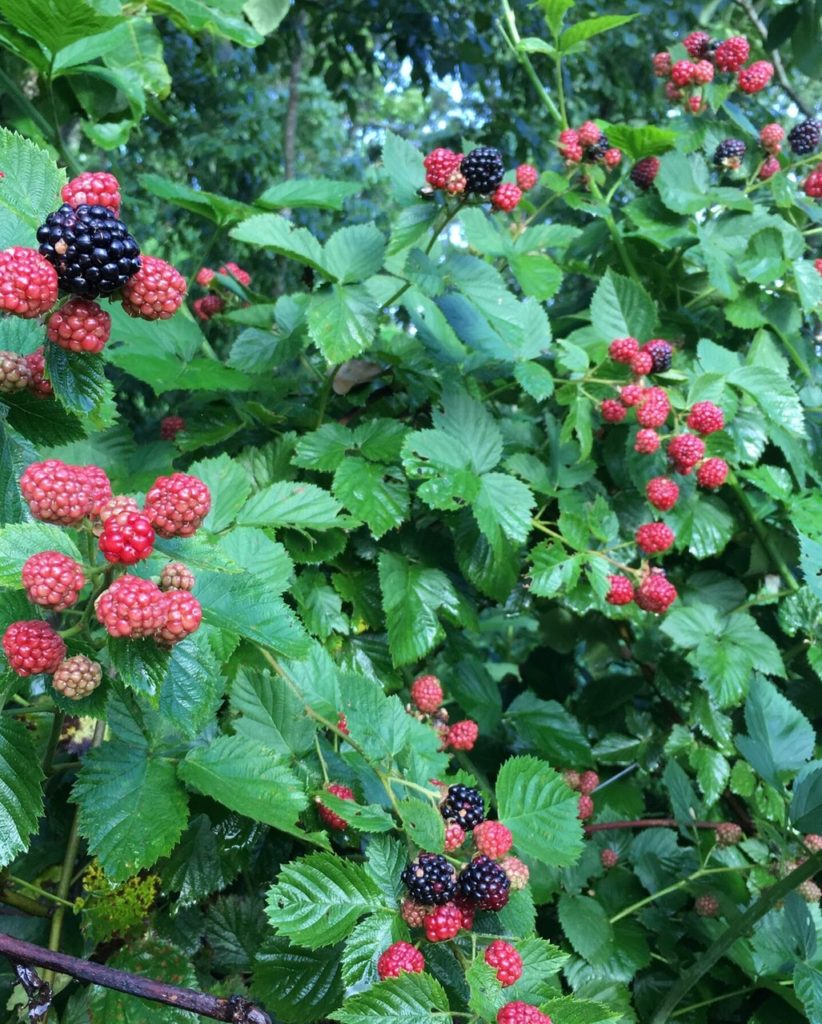
Plant in a prepared bed, row or mound a few inches deep and mulch well and prepare to watch the beautiful black berry shine.
“Purple as tulips in May, mauve into lush velvet, purple as the stain blackberries leave on the lips, on the hands, the purple of ripe grapes sunlit and warm as flesh.”
Marge Piercy




